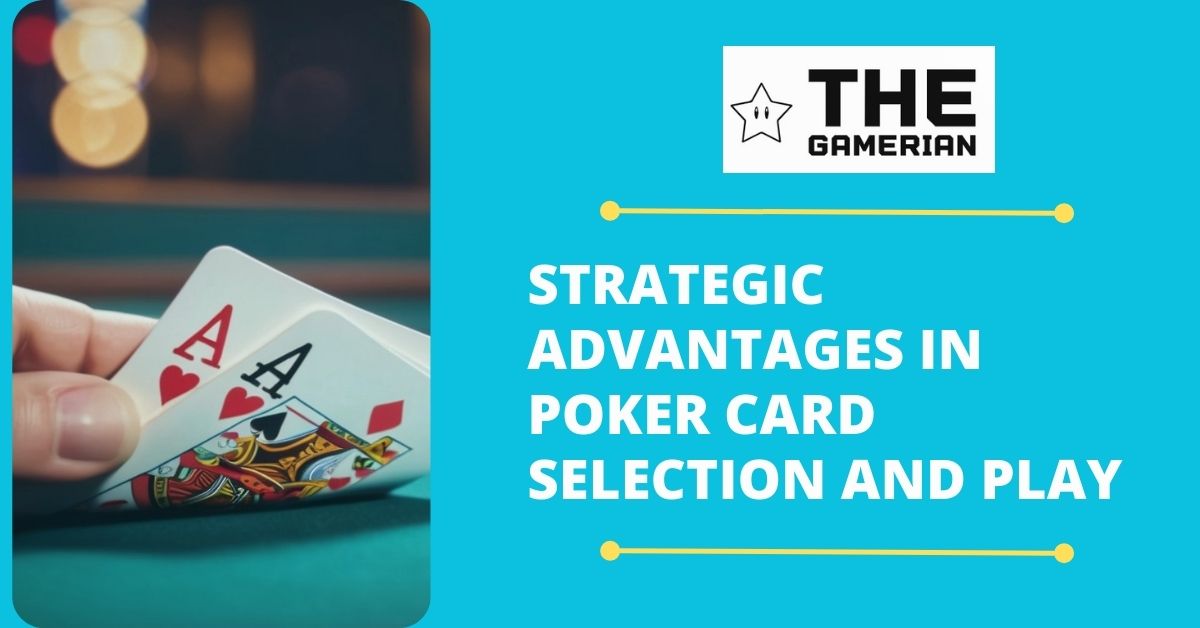Strategic Advantages in Poker Card Selection and Play
Experts analyze countless hands to refine strategies for poker, focusing on card selection and play. These strategies vary significantly depending on the game’s context, such as the number of opponents, the stage of the tournament, and the player’s position at the table.
Careful selection and strategic play of cards can tilt the balance between winning and losing. Players can improve their decision-making process by examining historical data and applying probabilistic theory, leading to more effective play over time.
Analyzing Starting Hands

A meticulous approach can differentiate between a victorious outcome and an educational defeat when selecting which hands to play in a poker game. Opting for strong starting hands lays a solid foundation, yet flexibility based on position and reading opponents is equally vital.
Aces through tens paired are mightier in their solitude, but when connected and suited, like an ace-king or a queen-jack, they weave potential for a royal flush or a straight, elevating their potentiality.
Also read: Maxim88 Casino
Positional Play and Its Subtleties
Operating from a later position affords a player the luxury of observing others’ decisions before making their own, an invaluable asset in gauging the hand’s direction. Early positions demand caution, nurturing conservatively strong hands.
Conversely, the freedom in later positions permits a wider range of starting hands, leveraging the advantage of insight into preceding actions.
Mastering Aggression with Discernment
Employing aggression effectively necessitates a balance. Raising and re-raising with authoritative hands seizes control of the pot and pressures opponents.
Yet, unwarranted aggression, especially with weaker hands, can lead to precarious situations. The timing and context of aggression, sculpted by an understanding of opponents’ tendencies and stack sizes, becomes an indispensable tool in the player’s repertoire.
Also read: MLB66
The Art of the Bluff: Calculated Deception
A successful bluff depends on your ability to understand table dynamics, such as your image, the betting patterns, and the possible hands of your opponents.” Crafting scenarios where your story aligns logically with the played hands can compel opponents to fold superior hands.
Blockers
Blockers — cards that diminish an opponent’s likelihood of holding a particular combination — emerge as a subtle yet potent instrument in a player’s strategy. Using blockers in poker empowers a player to make more informed decisions about their own hand’s relative strength.
For instance, holding an ace not only improves one’s odds of crafting a high pair but also reduces the probability of an opponent forming ace-high combinations, providing a strategic veneer not immediately apparent.
Adapting to Table Dynamics

Each live casino poker game unfurls its own rhythm and dynamics, necessitating adaptation. A table leaning towards conservatism offers opportunities to exploit with aggression, pilfering blinds and controlling the flow. Conversely, at an aggressive table, patience transforms into an asset, as waiting for premium hands can culminate in considerable gains from opponents’ over-zealous plays.
Pot Odds: Harnessing Mathematics
Incorporating a mathematical lens, specifically pot odds — the ratio of the pot size to the cost of a contemplated call — enriches decision-making. Engaging with pot odds furnishes an analytical framework to judge whether proceeding with a hand justifies the cost, accentuating the blend of instinct and analysis that poker encapsulates.
Reading the Table: Beyond Cards
Grasping the subtleties of opponents’ behavior and betting patterns offers insights surpassing the physical cards. Shifts in demeanor, betting anomalies, and patterns in hand selection hint at underlying strengths, weaknesses, and bluffing tendencies.
This keen observation, meshed with strategic play, forges an amalgamated approach where psychology and strategy converge.
Also read: Gamersaloon Review
Leveraging Tells: The Unspoken Language
Tells — involuntary expressions of a player’s hand quality — serve as a cipher to those attuned to them. While some players exhibit clear signs, the pursuit lies in discerning the more subtle indicators. Integration of these observations with broader strategic play can delineate the narrow margins between victory and defeat.
Conclusion
Navigating the complexities of poker card selection and play intertwines analytical rigor with the intuitive grasp of human psychology. Each element interlocks to construct a comprehensive strategy. Mastery comes from multiple tactics and adapting to the evolving game.


